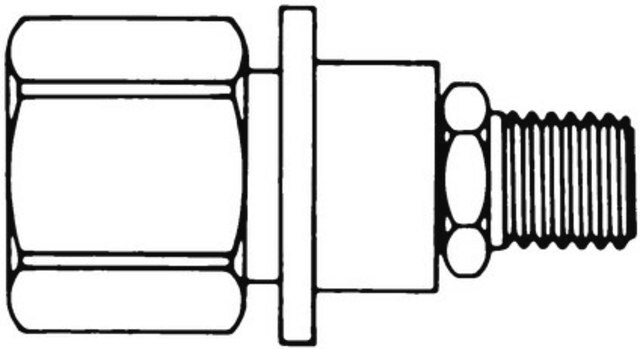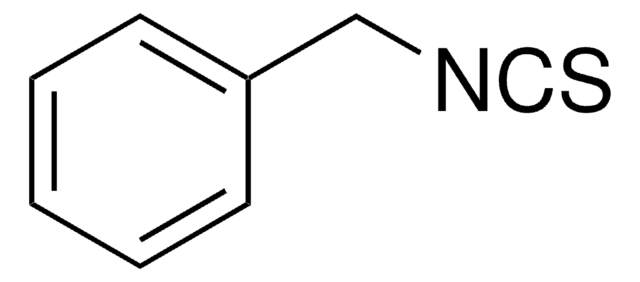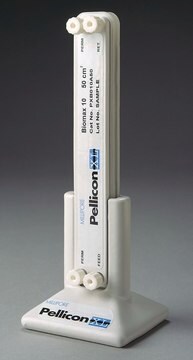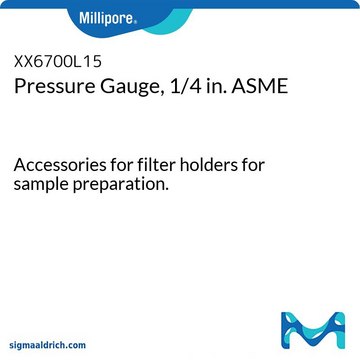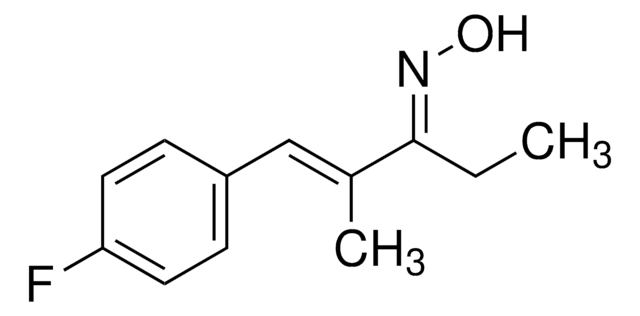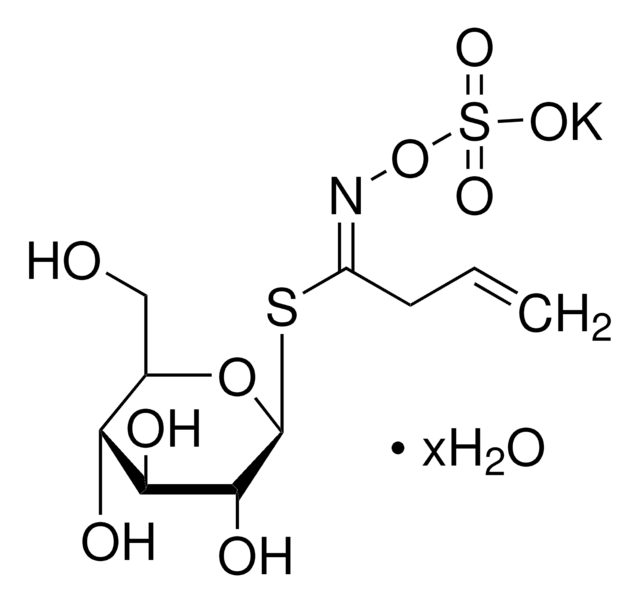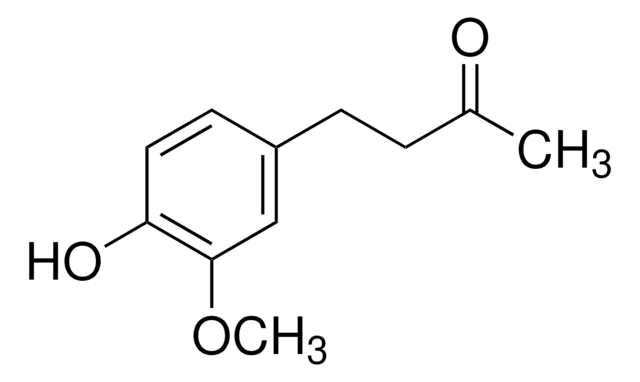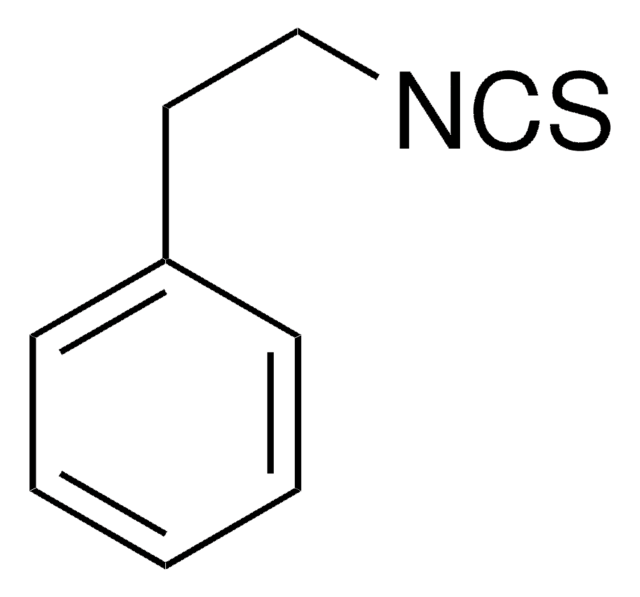W203408
Allyl isothiocyanate
≥95%, FCC
Sinónimos:
AITC, Oil of mustard
About This Item
Kosher
Productos recomendados
biological source
synthetic
Quality Level
grade
Halal
Kosher
reg. compliance
FCC
FDA 21 CFR 117
FDA 21 CFR 172.515
assay
≥95%
refractive index
n20/D 1.529 (lit.)
bp
150 °C (lit.)
mp
−80 °C (lit.)
density
1.013 g/mL at 25 °C (lit.)
application(s)
flavors and fragrances
documentation
see Safety & Documentation for available documents
food allergen
no known allergens
organoleptic
horseradish; pungent
storage temp.
2-8°C
SMILES string
C=CCN=C=S
InChI
1S/C4H5NS/c1-2-3-5-4-6/h2H,1,3H2
InChI key
ZOJBYZNEUISWFT-UHFFFAOYSA-N
¿Está buscando productos similares? Visita Guía de comparación de productos
Categorías relacionadas
General description
Biochem/physiol Actions
Disclaimer
signalword
Danger
Hazard Classifications
Acute Tox. 2 Dermal - Acute Tox. 2 Inhalation - Acute Tox. 4 Oral - Aquatic Acute 1 - Aquatic Chronic 1 - Eye Dam. 1 - Flam. Liq. 3 - Skin Corr. 1B - Skin Sens. 1
Storage Class
3 - Flammable liquids
wgk_germany
WGK 3
flash_point_f
113.0 °F - closed cup
flash_point_c
45 °C - closed cup
ppe
Eyeshields, Faceshields, Gloves, type ABEK (EN14387) respirator filter
Elija entre una de las versiones más recientes:
¿Ya tiene este producto?
Encuentre la documentación para los productos que ha comprado recientemente en la Biblioteca de documentos.
Los clientes también vieron
Global Trade Item Number
| Número de referencia del producto (SKU) | GTIN |
|---|---|
| W203408-10KG-K | 4061837819643 |
| W203408-1KG-K | 4061837819650 |
| W203408-500G-K | 4061837819667 |
| W203408-SAMPLE | |
| W203408-10KG | |
| W203408-1KG | |
| W203408-500G | |
| W203408-5KG | |
| W203408-5KG-K | |
| W203408-SAMPLE-K | 4061837819674 |
Nuestro equipo de científicos tiene experiencia en todas las áreas de investigación: Ciencias de la vida, Ciencia de los materiales, Síntesis química, Cromatografía, Analítica y muchas otras.
Póngase en contacto con el Servicio técnico
